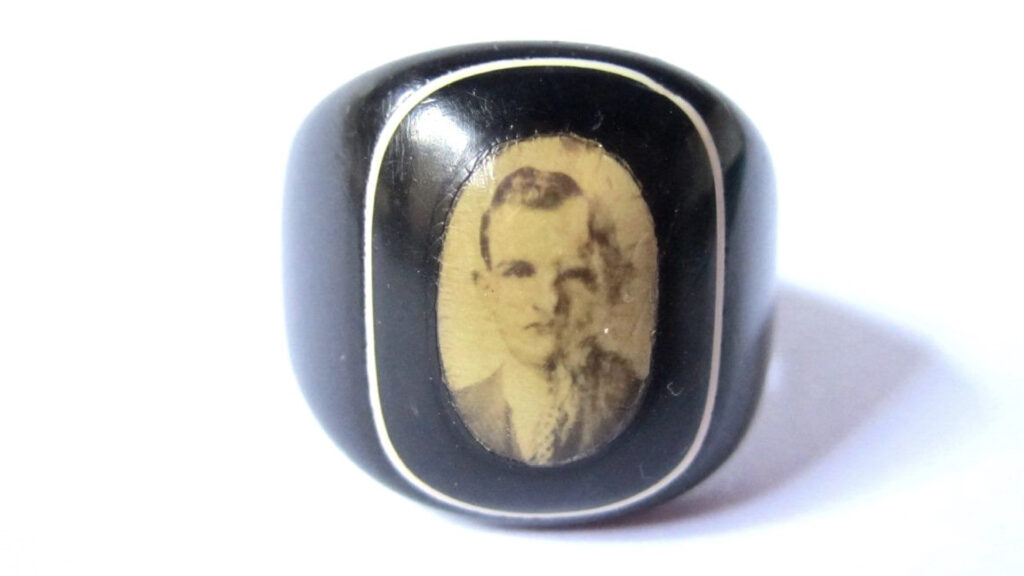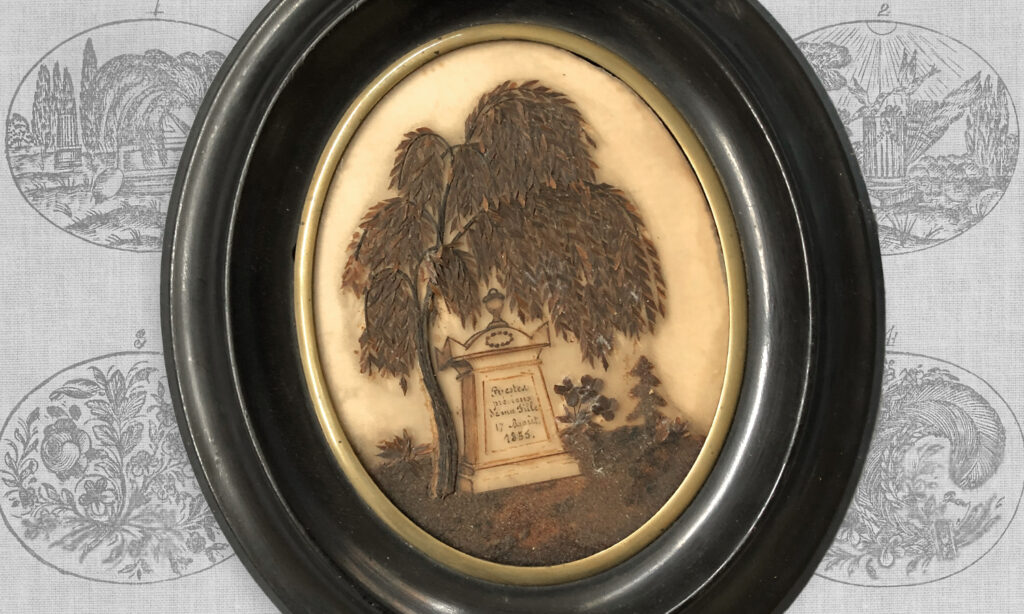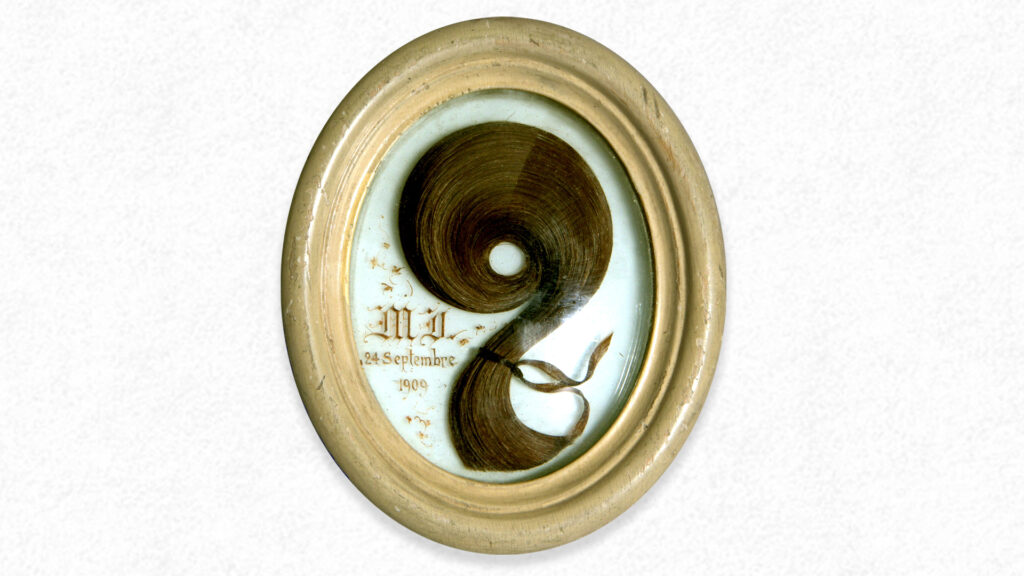Bakelite
Bakelite is worth noting in the series of jet and its imitations, but the use of Bakelite in mourning and sentimental jewels is negligible enough to not worry about it as a direct competitor to jet for collecting.
Developed between 1907 and 1909 by Dr Leo Baekeland, Bakelite is a plastic, consisting of a thermosetting phenol formaldehyde resin, formed from an elimination reaction of phenol with formaldehyde filler. Be sure to test for Bakelite by scratching and receiving a black streak and powder residue. Often the word ‘patent’ is stamped on Bakelite pieces and the hot needle test, which, when applied, will give off the smell of phenol.
Bakelite was widely used in many household and industrial products of the time, becoming a commercial success. It was cheap to produce, strong and easy to mould, making it an ideal material for the commercial demand for home products in the 20th century. Unfortunately, Bakelite did not hold its colour as well as other plastics over time, so its use was abandoned.
Bakelite was used for mourning, memorial and sentimental purposes. During the 1930s and 1940s, there was a brief period where photographs were placed inside Bakelite/Celluloid rings, so it became quite an important material in its own right and shouldn’t be seen as a jet imitation.







